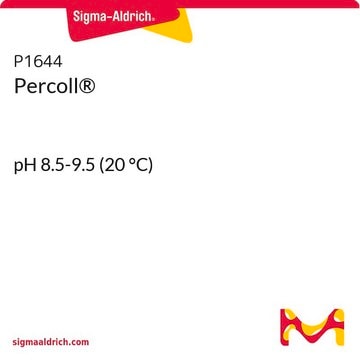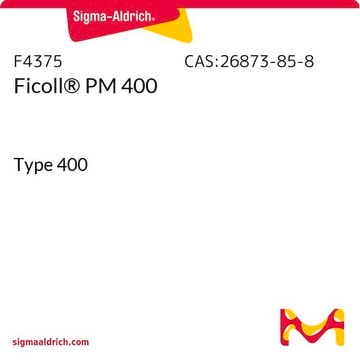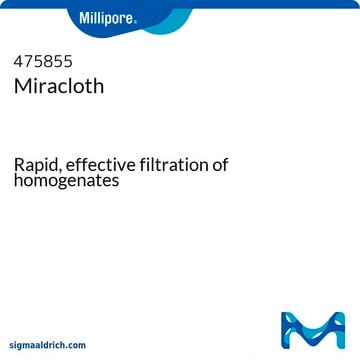Kluczowe dokumenty
P7828
Percoll®
suitable for plant cell culture
Synonim(y):
nośnik z gradientem gęstości
Wybierz wielkość
426,00 zł
Wybierz wielkość
About This Item
426,00 zł
Polecane produkty
sterylność
aseptically filled
Poziom jakości
Formularz
colloidal (Colloidal solution of silica coated with polyvinylpyrrolidone (PVP))
metody
cell culture | plant: suitable
pH
8.9 (20 °C)
Zastosowanie
agriculture
temp. przechowywania
2-8°C
Szukasz podobnych produktów? Odwiedź Przewodnik dotyczący porównywania produktów
Zastosowanie
Informacje prawne
Kod klasy składowania
10 - Combustible liquids
Klasa zagrożenia wodnego (WGK)
WGK 3
Temperatura zapłonu (°F)
Not applicable
Temperatura zapłonu (°C)
Not applicable
Środki ochrony indywidualnej
Eyeshields, Gloves
Wybierz jedną z najnowszych wersji:
Certyfikaty analizy (CoA)
Nie widzisz odpowiedniej wersji?
Jeśli potrzebujesz konkretnej wersji, możesz wyszukać konkretny certyfikat według numeru partii lub serii.
Masz już ten produkt?
Dokumenty związane z niedawno zakupionymi produktami zostały zamieszczone w Bibliotece dokumentów.
Klienci oglądali również te produkty
Protokoły
Aby przygotować gradient Percolla, osmolalność Percolla musi być dostosowana za pomocą soli fizjologicznej lub pożywki do hodowli komórkowej, aby Percoll był izotoniczny z fizjologicznymi roztworami soli.
To prepare a Percoll gradient, the osmolality of Percoll must be adjusted with saline or cell culture medium to make Percoll isotonic with physiological salt solutions.
Active Filters
Nasz zespół naukowców ma doświadczenie we wszystkich obszarach badań, w tym w naukach przyrodniczych, materiałoznawstwie, syntezie chemicznej, chromatografii, analityce i wielu innych dziedzinach.
Skontaktuj się z zespołem ds. pomocy technicznej











